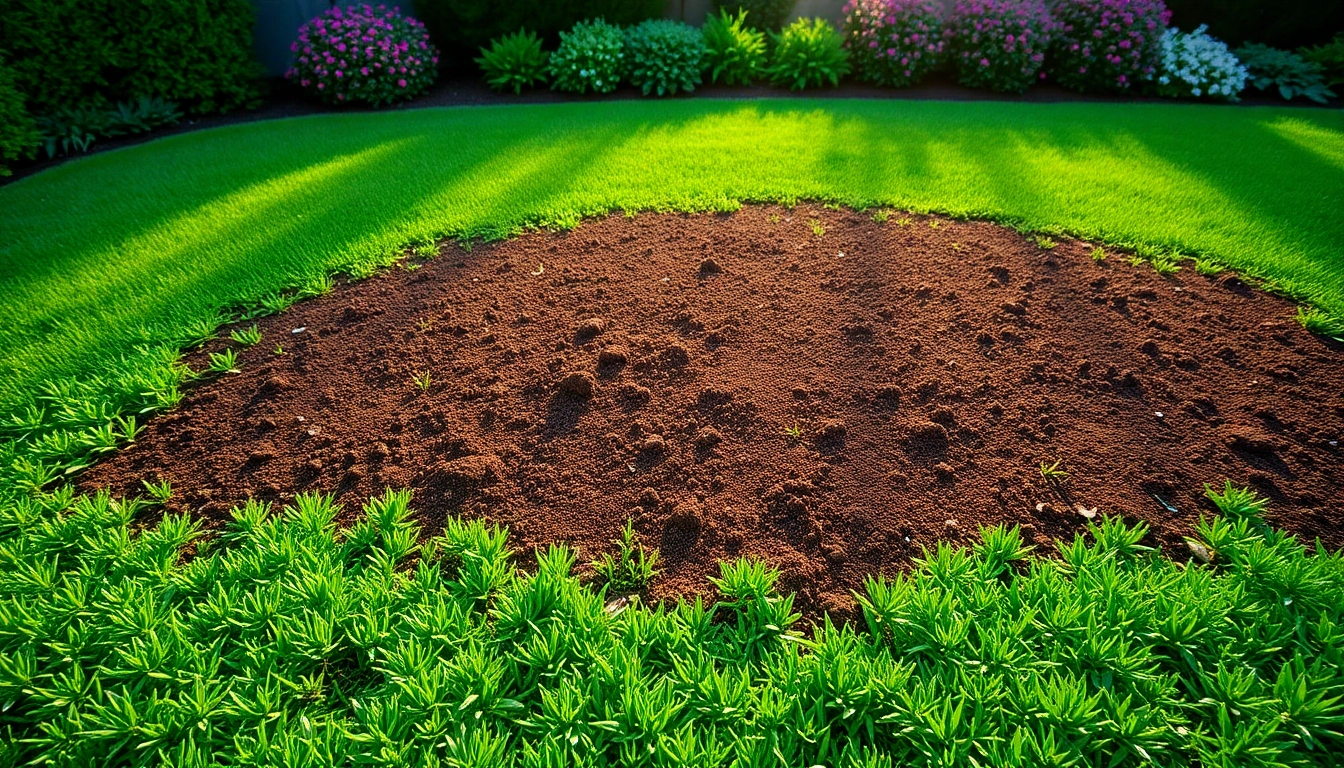A Comprehensive Guide to Lawn Top Dressing for a Healthier Turf

The Importance of Lawn Top Dressing
When it comes to nurturing a vibrant and healthy lawn, lawn top dressing plays a crucial role. It serves as a key practice that can enhance the overall health of your grass, improve soil quality, and create an aesthetically pleasing landscape. Whether you’re a seasoned gardener or a new homeowner, understanding the importance of this process can elevate your lawn care game and ensure a lush and green turf year-round.
Enhancing Soil Health
One of the primary benefits of lawn top dressing is its contribution to soil health. Over time, soil can become compacted and depleted of essential nutrients, which negatively affects grass growth. Top dressing involves applying a thin layer of organic materials such as compost or well-rotted manure, which helps restore nutrients back into the ground. This process not only improves the soil structure but also enhances its microbiological activity, promoting a living ecosystem that supports healthy grass roots.
Balancing Nutrients for Growth
A well-balanced nutrient profile is imperative for the healthy growth of grass. Top dressing allows you to tailor the nutrients your lawn receives based on its specific needs. For example, adding a layer of compost can provide a mix of nitrogen, phosphorus, and potassium, essential for vigorous grass growth. By paying attention to your lawn’s unique requirements, you can use top dressing to support optimum growth and make your grass more resilient against pests and diseases.
Improving Lawn Aesthetics
In addition to promoting health and vigor, lawn top dressing contributes to the visual appeal of your lawn. A smooth layer of compost or topsoil helps fill in bare patches, uneven spots, and small holes in the lawn. This even layer makes for an attractive turf that enhances your landscape design. Moreover, by improving the overall density of the grass, top dressing can create a lush, green lawn that becomes the envy of the neighborhood.
Types of Lawn Top Dressing Materials
Understanding the types of materials you can use for top dressing is vital for achieving the best results. The choice of dressing material greatly influences the effectiveness of the top dressing, as different materials serve different purposes.
Organic Options: Compost and Manure
Organic materials are the best option for top dressing, as they enrich the soil and bolster its ability to retain moisture. Finished compost is a popular choice because it is nutrient-rich and helps improve soil structure. There are various types of compost available, including leaf mold, mushroom compost, and standard yard waste compost. Manure, particularly well-composted chicken or cow manure, is another great organic option that can add valuable nutrients.
Inorganic Choices: Sand and Soil
Inorganic materials also have their place in top dressing. Sharp sand can be mixed with organic materials to improve drainage, especially in heavy clay soils. Additionally, loamy soils can provide a balanced structure that allows for water retention while supporting aeration. The key is to ensure these materials complement one another, promoting an overall improvement in soil performance.
Mixing for Optimal Results
Combining various materials often yields the best results. A common recommendation is a mix that includes three parts sharp sand, six parts sandy loam or weed-free topsoil, and one part organic compost. This mixture provides adequate drainage while enhancing nutrient retention, a perfect setup for thriving grass.
How to Properly Top Dress Your Lawn
Successfully top dressing your lawn requires careful planning and execution. Here’s a step-by-step guide to ensure the best results.
Preparation and Tools Needed
Before you begin top dressing, it’s essential to gather the right tools. You will need:
- Rake
- Spreader (manual or motorized)
- Shovel
- Wheelbarrow
- Watering can or hose
Additionally, mowing your lawn to a shorter height prior to applying the top dressing will help the grass recover better. Ensure that the lawn is dry, as moisture can clump the top dressing materials and make application difficult.
Steps for Effective Application
- Begin by checking your lawn: Identify any bare spots or areas in need of special attention.
- Mow the grass: Keep it short to allow the top dressing to reach the soil.
- Apply the top dressing: Use a rake or a spreader to evenly distribute the dressing over the lawn. Aim for a layer that is no thicker than a quarter-inch to prevent suffocating the grass.
- Work into the soil: Rake the top dressing to ensure it penetrates the grass and mixes with the underlying soil.
- Water the lawn: A gentle watering helps settle the dressing into place, promoting better absorption of nutrients.
Timing: When is Best for Lawn Top Dressing?
The timing of your top dressing application is crucial for its success. Early spring, just as the grass is breaking dormancy, is generally the best time to top dress. This timing allows for rapid growth and recovery. However, you can also apply top dressing at other times if your lawn simply needs a nutrient boost at different points of the year, particularly during fall when grass is preparing for dormancy.
Common Mistakes to Avoid When Top Dressing
Even seasoned lawn care enthusiasts can make mistakes during the top dressing process. Awareness of these errors can save time and effort, leading to a healthier lawn.
Overdoing the Layer Thickness
A common mistake is applying too thick a layer of top dressing, which can suffocate the grass and prevent it from accessing sunlight. It can also lead to uneven growth and patchiness. Always stick to a maximum thickness of a quarter-inch.
Ignoring Soil Type Compatibility
Not all top dressing materials work well with every soil type. For instance, using heavy clay soil on top of sandy soil can create drainage issues. Test your soil before applying top dressing and choose materials that will enhance and complement its existing structure.
Timing Mistakes with Seasonal Changes
Applying top dressing during extreme temperatures can stress your lawn. Avoid periods of high heat or frosty weather. As mentioned, early spring and early fall are ideal for most types of lawns.
Measuring the Success of Lawn Top Dressing
Once you have completed the top dressing process, monitoring its effectiveness is crucial for continuous improvement.
Indicators of Lawn Health Improvement
Healthy lawns exhibit certain characteristics, including lush green growth, increased density, and minimal bare patches after top dressing. Over time, you should also notice improvement in soil drainage and moisture retention, as well as reduced weed growth.
Long-Term Maintenance Strategies
To ensure lasting health and beauty of your lawn, integrate top dressing into your routine lawn care practices. Consider annual or biennial top dressing to replenish nutrients and maintain an ideal lawn environment.
When to Repeat the Top Dressing Process
The need for repeat top dressing largely depends on your lawn’s condition and performance. Monitoring soil health through testing every couple of years can provide insight into when another application is necessary. If the lawn shows signs of nutrient depletion or becomes uneven again, it’s time to revisit top dressing.






